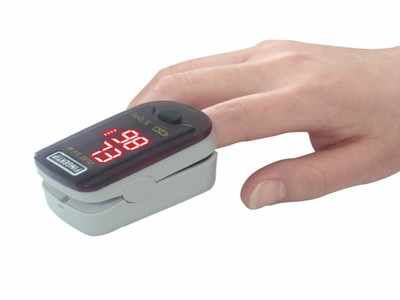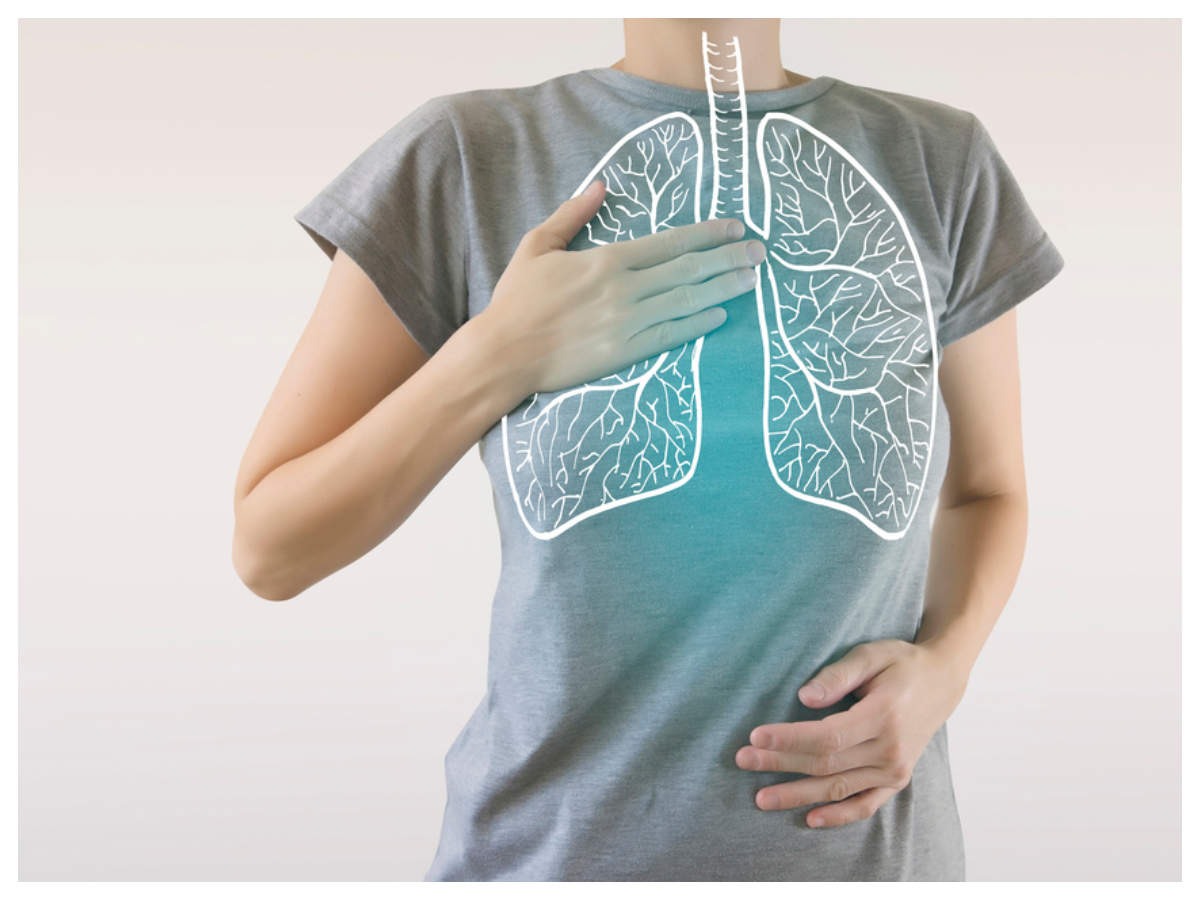
If you have ever been admitted to a hospital, you will remember that one of the first things that the nurses do is clip a small plastic cap on your index finger – a pulse oximeter. It reads the oxygen saturation in your blood, simply put how much oxygen is being carried in your blood. A recent New York Times article suggests that this ER essential can play an important role in managing the infection in people who are asymptomatic.
Dr Vijay D’Silva says that the device can help authorities figure out who in quarantine need to be shifted to a hospital. “In Maharashtra, doctors are seeing patients with a lot of shadows in the lungs, low oxygen levels in the blood but no signs of breathlessness. With an oximeter these patients can be identified in time and given hospital care before their oxygen levels plummet to dangerously low levels,” says Dr D’Silva, director medical affairs and critical care, Asian Heart Institute Mumbai.
An oximeter measures peripheral oxygen saturation, or SpO2, in the blood. For a normal individual, this value is around 97, and if it falls below 90 then the brain may not get enough oxygen and the individual may start experiencing confusion. “Covid patients being admitted to hospitals report symptoms such as not being able to think properly or taste and headaches…all point to a higher concentration of CO2 in the blood because lungs are not able to function properly. By the time symptoms appear in Covid patients, their lungs are already 50% damaged,” says Dr Shahaji Deshmukh, dean, Bharti Vidyapeeth medical college and hospital, Sangli, Maharashtra. In such patients, an oximeter can alert them and they can seek medical help, Dr Deshmukh adds.
While this device is available over the counter in the price range of Rs 2,000-4,000 and can be used at home, AIIMS’ Dr Harjit Singh Bhatti warns that it should be used at home only if a person has co-morbidities like CAD, diabetes and hypertension. “It may cause needless panic otherwise,” says Dr Bhatti. “If not placed properly on the finger it can give a false reading. Ideally, it should only be used by people older than 60 and with co-morbidities,” he adds.
Dr Vijay D’Silva says that the device can help authorities figure out who in quarantine need to be shifted to a hospital. “In Maharashtra, doctors are seeing patients with a lot of shadows in the lungs, low oxygen levels in the blood but no signs of breathlessness. With an oximeter these patients can be identified in time and given hospital care before their oxygen levels plummet to dangerously low levels,” says Dr D’Silva, director medical affairs and critical care, Asian Heart Institute Mumbai.
An oximeter measures peripheral oxygen saturation, or SpO2, in the blood. For a normal individual, this value is around 97, and if it falls below 90 then the brain may not get enough oxygen and the individual may start experiencing confusion. “Covid patients being admitted to hospitals report symptoms such as not being able to think properly or taste and headaches…all point to a higher concentration of CO2 in the blood because lungs are not able to function properly. By the time symptoms appear in Covid patients, their lungs are already 50% damaged,” says Dr Shahaji Deshmukh, dean, Bharti Vidyapeeth medical college and hospital, Sangli, Maharashtra. In such patients, an oximeter can alert them and they can seek medical help, Dr Deshmukh adds.
While this device is available over the counter in the price range of Rs 2,000-4,000 and can be used at home, AIIMS’ Dr Harjit Singh Bhatti warns that it should be used at home only if a person has co-morbidities like CAD, diabetes and hypertension. “It may cause needless panic otherwise,” says Dr Bhatti. “If not placed properly on the finger it can give a false reading. Ideally, it should only be used by people older than 60 and with co-morbidities,” he adds.
Download
The Times of India News App for Latest India News

Coronavirus outbreak
Trending Topics
LATEST VIDEOS
More from TOI
Navbharat Times
Featured Today in Travel
Quick Links
Coronavirus in MumbaiCoronavirus in KolkataCoronavirus in HyderabadCoronavirus in DelhiCoronavirus in BangaloreCoronavirus symptomsCoronavirus in IndiaWhat is CoronavirusCoronavirus NewsSolar EclipseNPRWhat is NRCCAB BillCAB and NRCRTI BillPodcast newsLok SabhaShiv SenaYSRCPCongressBJP newsUIDAIIndian ArmyISRO newsSupreme Court
Get the app









